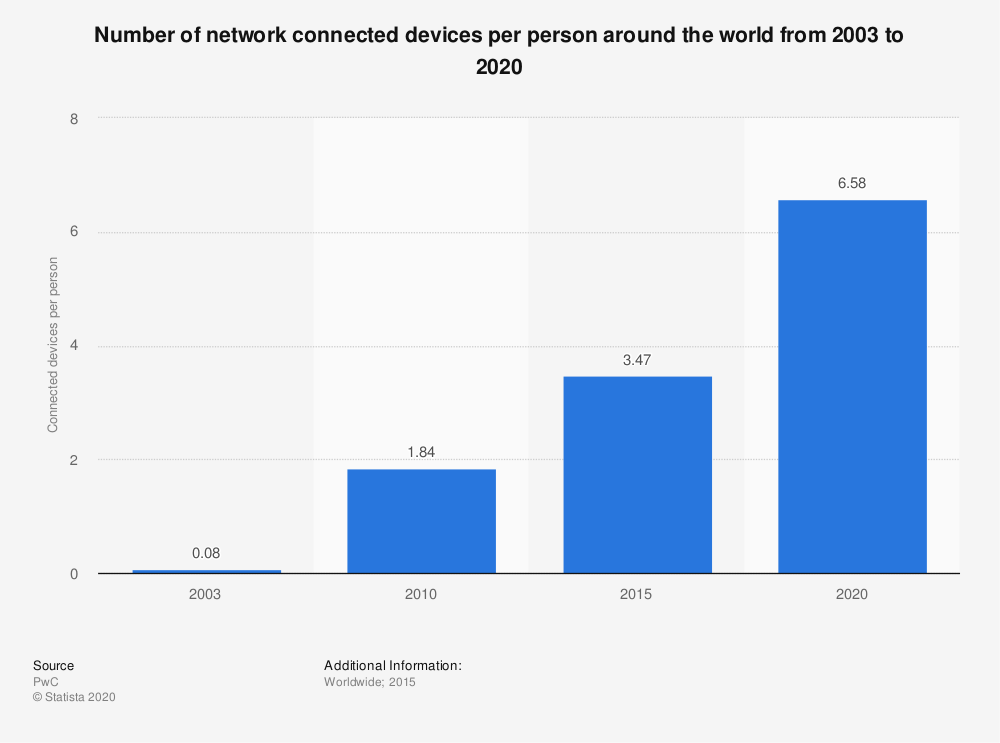Did you know there are billions of video-enabled devices in the world? The average person has 6.5 network-connected devices, and the average American alone is expected to have over 13 by 2022. This has fueled an explosion in OTT streaming, with the total market set to more than double from $67.8 billion in 2018 to around $160 billion in 2024.

There is a massive and ongoing shift of viewers from traditional broadcasting and pay-TV to OTT streaming services. In response, pay-TV operators are making their programming viewable across multiple subscriber devices, a.k.a. TV Everywhere. Rights holders need to keep their valuable content secure in a whole range of situations, which requires a multi-disciplinary approach to security.
The OTT market is huge and sees thousands of apps play content on thousands of different consumer devices. For service providers, content protection is actually about revenue security and monetizing their valuable rights. But how can you keep content secure in a multi-screen environment? Let’s take a look.
1. Protecting your content = protecting your bottom line
Piracy in various forms is the largest threat facing rights holders and their ability to continue to produce compelling content. In fact, piracy is on track to cost the OTT industry over $51 billion by 2022. The easier it is for people to steal and re-distribute premium content (whether as a seemingly innocent favor to friends, or for large-scale profit-making purposes), the less content owners can charge to monetize their hard work, which in turn reduces the motivation to produce new compelling video content. For studios and distributors, content security is key to prevent or disrupt leakages that otherwise affect their business results.
This presents a challenge for OTT streaming providers. Users can access content in more ways than ever, and with that increase comes more avenues of attack for pirates to exploit.
Without an effective multi-DRM solution in place that can guarantee the safety of valuable content, the less likely studios will be to license their products for OTT streaming..
2. Multi-screen OTT streaming needs a multi-DRM service
With so many different devices now being utilized, the encryption and decryption process of digital rights management (DRM) must be able to negotiate a myriad of different systems and standards. A multi-DRM solution seeks to achieve this by creating a universal content security interface which can seamlessly interact with whatever device, operating system, or DRM system that is being used. A cloud-based multi-DRM service relieves the OTT operator of the need to deal with the specifics of each DRM type and client device platform.
3. Flexibility is the key to a proactive defense
Using a variety of security tactics and tools, and being able to update software proactively to deal with potential threats or as they arise in real time, is essential in the fight against modern-day content piracy. Earlier protection technologies, such as using HDMI cables or CD copy protection, were insufficient and quickly hacked.
Modern pirates have an array of potential attack avenues, such as jailbroken devices, compromised user details, and server vulnerabilities, to aid them in stealing valuable content. Therefore, it is even more important to use a multi-DRM solution to protect assets. With the flexibility accorded by a cloud-based multi-DRM service, and implementing state-of-the-art key management techniques, any OTT operator can move forward with confidence.
4. A DRM can help with more than just security
A modern multi-DRM solution does not just keep content safe from pirates. It can also collect a variety of user data, turning your DRM protection into a potential asset generator. A multi-DRM system can aid in collecting user, device and network data and hand that off to video analytics services. Such data may include time and length of each session, type of device and access location, and other pertinent data. This information is then used to build and tweak algorithms that predict user viewing preferences. This is an essential part of the success of OTT streaming services, ensuring that their customers can find something they want to watch quickly. Thus, OTT service providers can greatly improve their customer’s quality of experience (QoE), all while simultaneously protecting their valuable content.
5. Securing OTT live sports with fingerprints and watermarks
While much of the work of multi-DRM systems is focused on the need to protect content for video-on-demand (VOD) services, whether Subscription (SVOD) or Ad-based VOD (AVOD), there is another field undergoing massive growth that faces even bigger content protection challenges: OTT live sports. With more players getting into an already-crowded market (e.g. Amazon and Facebook), the competition for and price of broadcasting rights is surging. To effectively monetize these valuable rights, rights holders need to be able to protect their OTT live services from parallel and illegal re-streaming, and this requires applying more tools in the content protection arsenal.
To combat the re-streaming threat, multi-DRM protection along with forensic watermarking and fingerprinting are used to monitor suspected websites with the goal of quickly identifying and shutting down illicit stream sources, while having little or no effect on the viewer QoE. Such a multi-layered approach will be more effective since it extends the DRM security with another layer that goes beyond the content delivery to client devices. Watermarked video can be traced back to the last authorized recipient, before the content was leaked. This allows the service operator to decide on what action to take, whether to immediately shutdown the source of the illicit stream or proceed with evidence gathering for subsequent legal proceedings.
6. Greater quality warrants better security
For premium productions such as a live event broadcast in Ultra HD quality, content protection is essential to ensure adequate security. Few content producers or potential distributors would be willing to take on the risk of investing in valuable content if it could be easily stolen and redistributed. Premium programming needs to be able to command premium prices and a superb QoE, which relies on trust that the content will be adequately protected—something that only a proven multi-DRM service can ensure.
Not only that, but for consumers to trust a premium label, such as that of a Hollywood studio or a premium production feature in UHD quality, they need to enjoy a QoE that lives up to viewers’ expectations. If content producers and OTT operators can’t safeguard the media distribution chain, pirated content can leak into the market thereby diluting the brand and making it harder to license premium programming.
Why you need a cloud-based multi-DRM service
To keep up with the boom in OTT streaming in a modern and multi-screen environment, only a proven, cloud-based multi-DRM service can provide the protection content owners need, and ensure adequate returns on their investments. A major advantage with a cloud-based multi-DRM service is that it scales to accommodate sudden user bursts during exciting live events, while offering a global footprint enhanced by geo-redundancy with fail-over options to maximize uptime and minimize latency.
With the ability to support a wide variety of device platforms and operating systems such as iOS and Android, adaptive streaming protocols such as MPEG-DASH, Microsoft’s Smooth Streaming or Apple’s HLS, and DRMs such as Google Widevine and Apple FairPlay, a cloud-based multi-DRM service such as Intertrust’s ExpressPlay is the solution every OTT operator needs to make their business model a success in a multi-screen world.
To find out how our cloud-based multi-DRM service can broaden your options, increase your security and safeguard your bottom line, get in touch with our team today.








